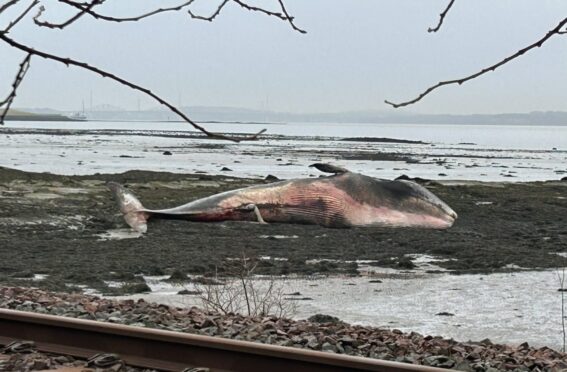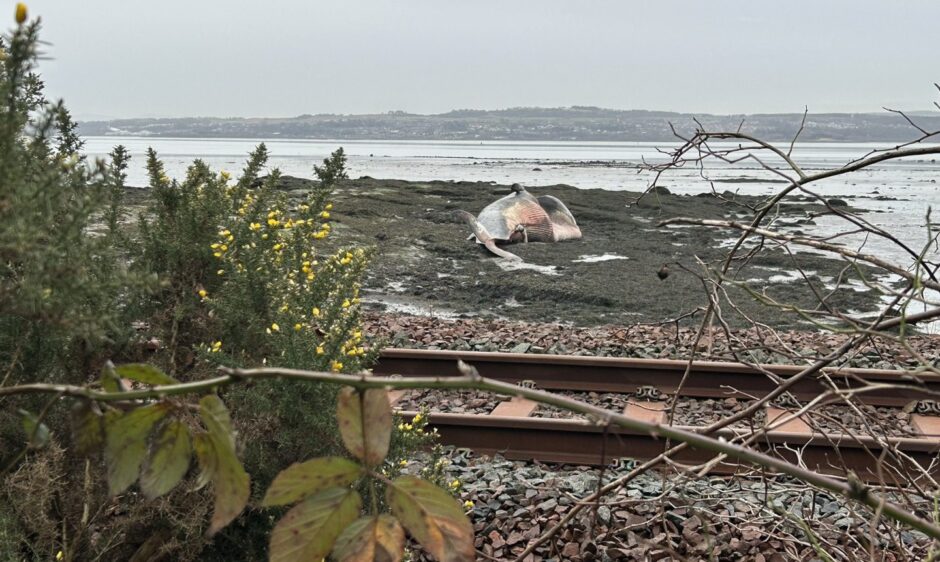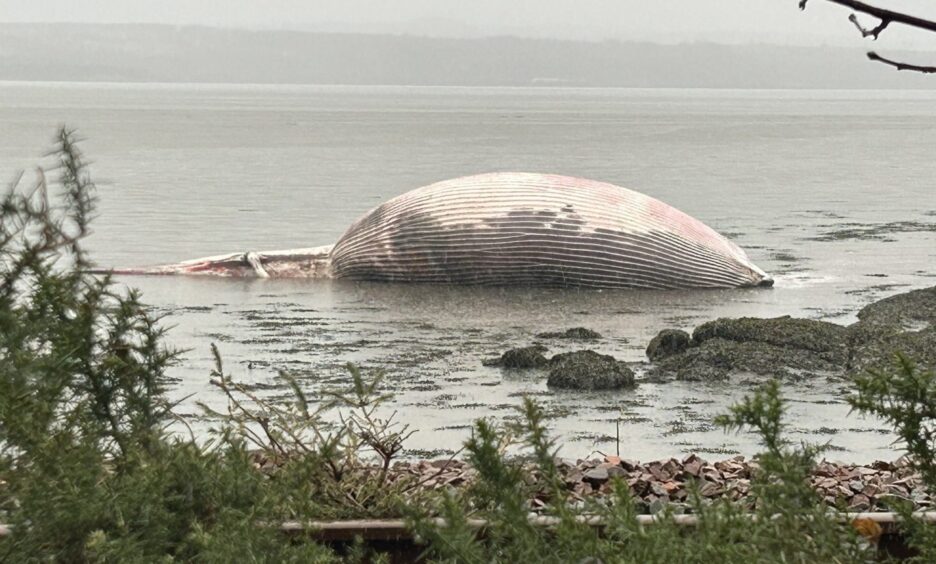The carcass of a huge fin whale that washed up on the Fife coast near Culross is to be left to rot away naturally.
The 17-metre-long fin whale was first spotted last Wednesday at a remote spot on the Firth of Forth.
Fife Coast and Countryside Trust had hoped a high tide may have floated the dead whale back out to sea.
Officers had been monitoring the situation daily.
Options included towing the carcass out to deeper water, burying it or incineration.
Fin whale washed up on the Fife coast near Culross a week ago
However, given its remote location on rocks close to Culross, a decision has been taken to leave the whale where it is.
It will now be left to naturally decompose.
This will enable it enrich the coastal environment with nutrients and provide a food source for wildlife during the winter period.
Robbie Blyth, head of operations at Fife Coast and Countryside Trust, which coordinates cetacean strandings on the Fife coast, said: “When possible, biologists and veterinarians from the Scottish Marine Stranding Scheme examine a carcass and conduct a necropsy to try to learn why the mammal may have died.
“On this occasion the whale had already started to putrefy and was not suitable for investigation.
“This is one of the reasons we have decided not to recover the carcass.
Whale carcass will be left to decompose
“Also, its location – at the foot of the railway embankment coastal defences – would have presented a challenge in recovering it.
“The location is relatively inaccessible to beach users and dog walkers.
“We believe that leaving it in situ causes the least disruption to locals and visitors.”
The decision was made after discussions with Fife Council, community representatives, Network Rail, Forth Ports, Forth Estuary Forum, NatureScot, SEPA, and Marine Scotland.
Officers will continue to monitor the carcass.
The public is advised not to access the shoreline or go near the whale.
Fin whales, also known as finback whales, can grow to as long as 20 metres and have a lifespan of up to 90 years.
They are the second-biggest mammal on Earth after the blue whale.












